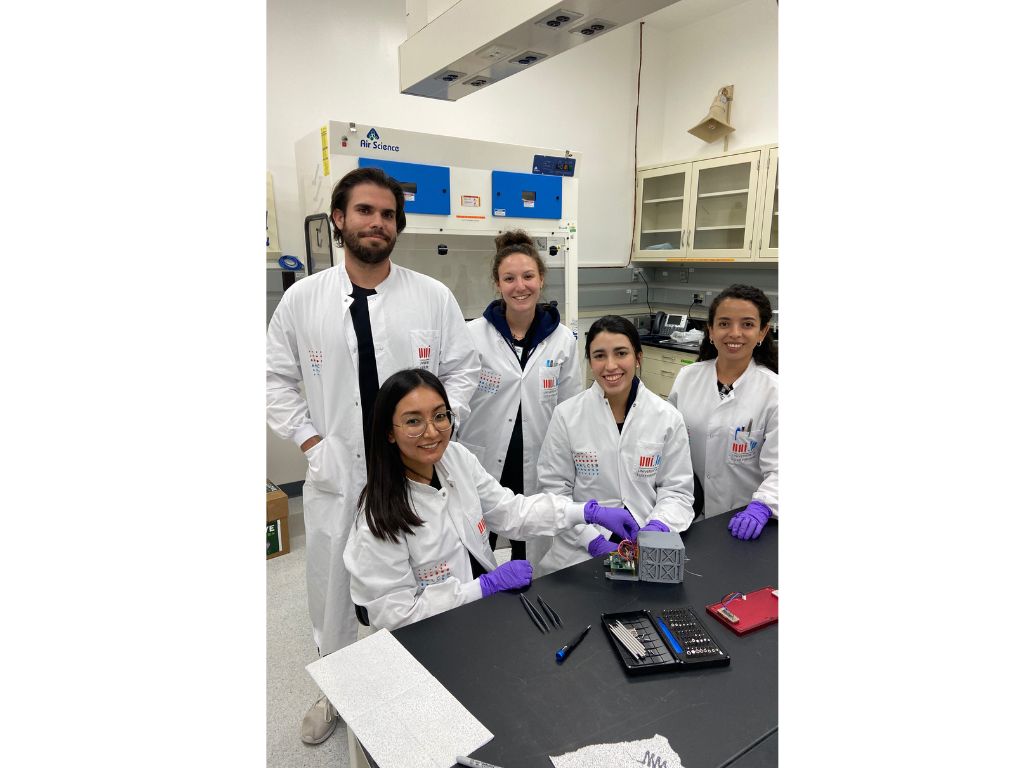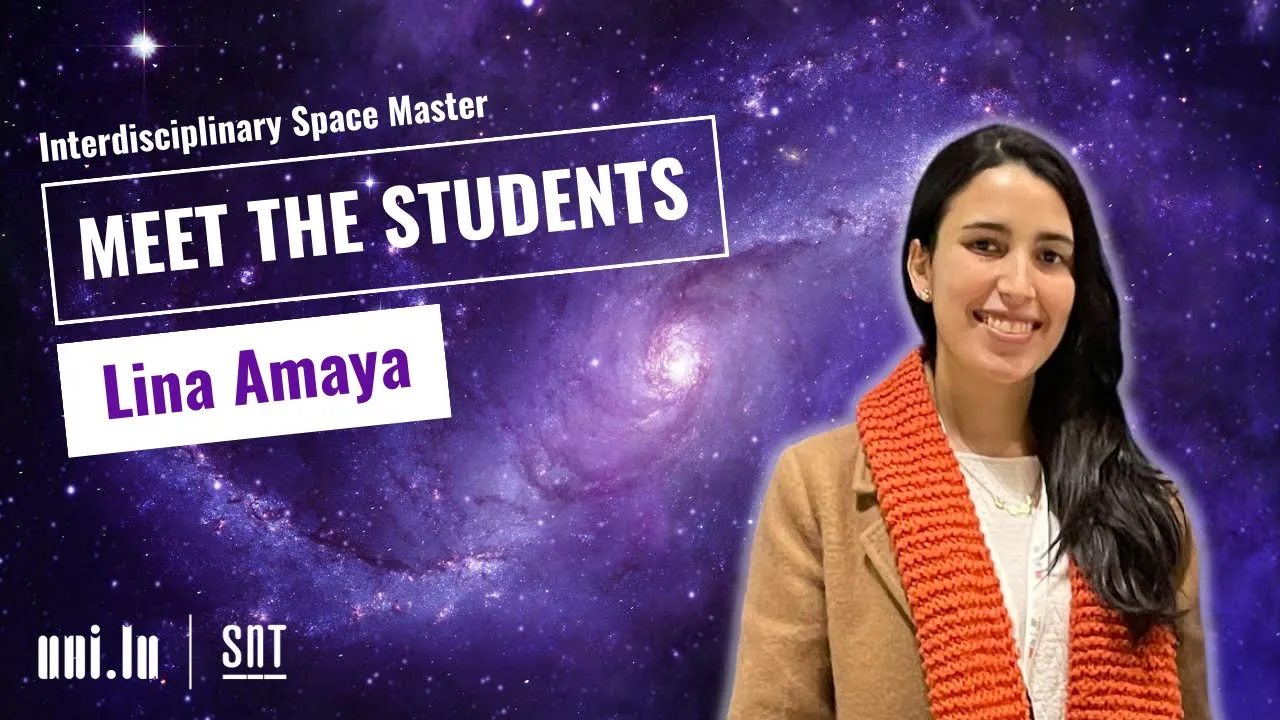This year, five students from the University of Luxembourg have successfully launched midbrain organoids from the BRAINS project to the International Space Station (ISS). The project, which was selected by the Überflieger 2 competition, explores the growth of midbrain 3D cell cultures in microgravity. It is the first scientific experiment from Luxembourg carried out on the ISS.
The BRAINS project (Biological Research using Artificial Intelligence for Neuroscience in Space) is a collaboration between students from the University of Luxembourg’s Interdisciplinary Centre for Security, Reliability and Trust (SnT) and the Luxembourg Centre for Systems Biomedicine (LCSB). The SnT space robotics research group (SpaceR) contributed its expertise to solve the challenge of making the experiment fully autonomous on the ISS. SpaceR’s student team José Delgado, Aelyn Chong Castro, and Lina María Amaya Mejía developed the “CUBE LAB”, an automated miniature laboratory that supplies the cell cultures with fresh nutrients and maintains a temperature of 37°C. This should allow them to grow into structures more complex than on Earth.
We sat down with Lina María Amaya Mejía, student at the University of Luxembourg and member of the BRAINS team from SpaceR (SnT), to share her experience of the launch and to find out how she felt about sending their experiment into space.
What did you and SpaceR research group contribute to the BRAINS project?
Our team developed the “CUBE LAB” that autonomously supports the growth of the midbrain organoids on the ISS. For this, we had access to state-of-the-art facilities such as SnT’s LunaLab. The equipment of this laboratory allowed us to conduct hardware prototype assembly and testing. My contribution was to design the experiment’s electronics that provided the brain organoids with a consistent supply of nutrients while maintaining a stable temperature of 37°C, ensuring optimal conditions for their growth during their time in space. We received technical and scientific guidance from Professor Miguel Olivares, head of SpaceR research group, and research scientist Carol Martinez as well as other members of the group.
How did your team prepare for the launch of the BRAINS experiment into space?
10 days prior to the launch, we arrived at the NASA laboratories in Cape Canaveral, United States, to prepare our prelaunch procedures. After settling there, the BRAINS bio-team (from LCSB) proceeded to prepare and embed the brain organoids, while the tech-team (from SpaceR-SnT) performed a prelaunch test protocol of the hardware and software. Two days prior to the launch, we integrated all parts of the experiment inside the “CUBE LAB” under the supervision of YURI and Space Tango. After the vacuum test, the “CUBE LAB” with the BRAINS experiment was handed over to Space Tango, who was in charge of loading the experiments to the rocket that took them to the International Space Station (ISS).

The BRAINS team during final preparations of the CUBE LAB. From left to right, top row: José Delgado, Elisa Zuccoli. Bottom row: Aelyn Chong Castro, Lina María Amaya Mejía, Daniela Vega Gutiérrez. ©Elisa Zuccol
How did you experience the launch?
We, along with the other three teams from the Überflieger 2 competition, gathered at the Rocket Launch Viewpoint. As we waited, we shared food and played music. We were all tired from the preparations of the experiments in the preceding days, but at the same time, we were so excited to see our experiments being launched that all the tiredness went away.
Witnessing our experiment make its journey into space was a moment of great accomplishment and wonder, after relentlessly working for over a year to reach this day. The launch took place at night, and the darkness made the rocket boosters’ ignition even more magical, lighting up the entire sky. We stood there, captivated, while watching the rocket until it disappeared from our sight. Then we all hugged, cheered with joy, and celebrated this incredible achievement.
How do you personally feel about sending something you built yourself into space?
I feel extremely proud and excited to have had the unique opportunity to send something I helped build into space. It’s truly amazing that as students we were given this opportunity to create a real space project, to work alongside space and scientific experts, and to learn from their expertise. Sometimes it felt very challenging, but in the end, we made it possible. I learnt a lot during the process. This entire experience shows me that with determination, dedication, and teamwork we can achieve remarkable things.
What’s next for you and your team in this project?
In May, we performed our on-ground control experiment at the LCSB facilities, in which we used the same devices to perform the same experiment, but under Earth’s gravity conditions. The bio-team sectioned the organoids from the space experiment and stained them with fluorescent markers. This allowed the detection, quantification and characterisation of the cells. The next step is to use artificial intelligence to extract relevant features from the stained organoids. This will give us the opportunity to evaluate and compare the performance of the on-ground and microgravity experiments.
Learn more about Lina María Amaya Mejía, student of the Interdisciplinary Space Master (ISM):

